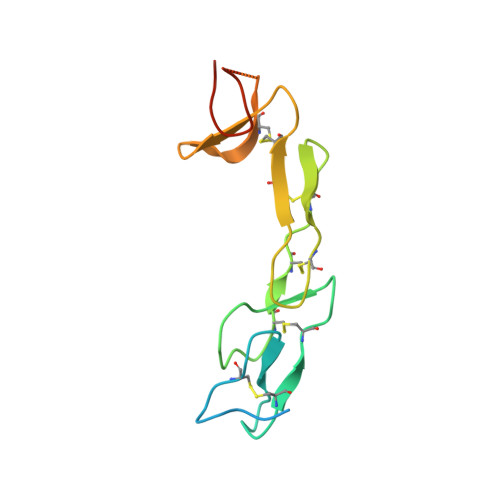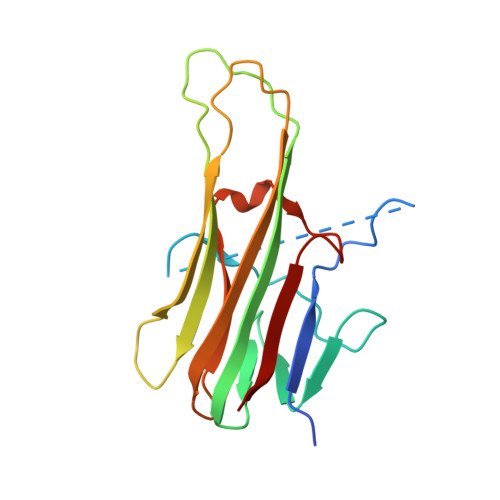Crystal structure of TRAIL-DR5 complex identifies a critical role of the unique frame insertion in conferring recognition specificity
Cha, S.-S., Sung, B.-J., Kim, Y.A., Song, Y.L., Kim, H.J., Kim, S., Lee, M.S., Oh, B.-H.(2000) J Biol Chem 275: 31171-31177
- PubMed: 10893238
- DOI: https://doi.org/10.1074/jbc.M004414200
- Primary Citation of Related Structures:
1DU3 - PubMed Abstract:
TRAIL is a cytokine that induces apoptosis in a wide variety of tumor cells but rarely in normal cells. It contains an extraordinarily elongated loop because of an unique insertion of 12-16 amino acids compared with the other members of tumor necrosis factor family. Biological implication of the frame insertion has not been clarified. We have determined the crystal structure of TRAIL in a complex with the extracellular domain of death receptor DR5 at 2.2 A resolution. The structure reveals extensive contacts between the elongated loop and DR5 in an interaction mode that would not be allowed without the frame insertion. These interactions are missing in the structures of the complex determined by others recently. This observation, along with structure-inspired deletion analysis, identifies the critical role of the frame insertion as a molecular strategy conferring specificity upon the recognition of cognate receptors. The structure also suggests that a built-in flexibility of the tumor necrosis factor receptor family members is likely to play a general and important role in the binding and recognition of tumor necrosis factor family members.
Organizational Affiliation:
Department of Life Science, and Division of Molecular and Life Science, Pohang University of Science and Technology, Pohang, Kyungbuk, 790-784, Korea.
















